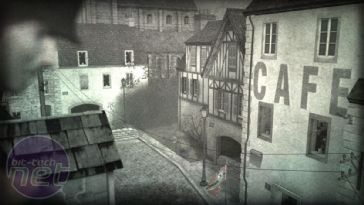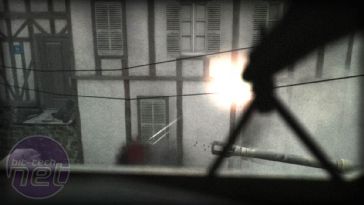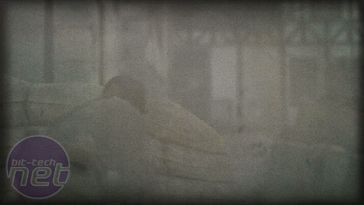

"Dug in, our fearless Reichwarriors prepare to re-liberate French-occupied France!
"Allied terror troops tremble before our massive hail of indomitable volkspirit.
"Through key German near-wins, we continue to dominate the vital war of nerves."
Day of Defeat: Source - arguably the best multiplayer World War II shooter around - builds a cinematic gaming experience with the help of the Source Engine's High Dynamic Range Rendering capabilities. It was the first game released by Valve that showcased their HDR technologies after the delays to the free technology demo level known as Lost Coast. However, the current problem with Day of Defeat: Source is that the quality of the scenes rendered is far beyond what was capable in the time period where the game is set."Allied terror troops tremble before our massive hail of indomitable volkspirit.
"Through key German near-wins, we continue to dominate the vital war of nerves."
Valve are working hard towards making the Day of Defeat experience even more cinematic with realistic effects that you would expect to see in a film of that era. Content development has come a long way in the last eighteen months or so, with the launch of several high-profile games making use of High Dynamic Range lighting.
For those who haven't read about HDR, we covered Valve's Source Engine implementation in great detail. In a nutshell, HDR - when it's implemented well - significantly increases the immersiveness of a game with amazingly realistic dynamic lighting effects. This includes - but is not limited to - the holy grail of perceived iris adjustments that the human eye would make in a realtime environment.
Valve are looking to push the boundaries on the gaming experience on all fronts. Half-Life 2 is, in my opinion, the best shooter of all time, but that doesn't mean Valve are sitting still. They're looking to push the boundaries even further than they managed with Half-Life 2. Graphics technology has come a long way since the launch of Half-Life 2, just over a year ago.
They feel that the next step is to improve the cinematic experience in Day of Defeat: Source with effects such as Depth Of Field, Motion Blur, Film Grain, Dust, and Colour Correction. Over the next few pages, we'll be covering these new technologies and how Valve intends to integrate them into Day of Defeat: Source to make it even more cinematic than it already is.
With the exception of Colour Correction, all of these film effects essentially reduce the fidelity of the image, but the human eye perceives a much more complex scene. It could also be said that some of these technologies aren't going to be easy to implement into the classic WWII multiplayer, but it should serve you with some tidbits of graphical goodness that we're expecting to feature in Valve's future titles.

MSI MPG Velox 100R Chassis Review
October 14 2021 | 15:04













Want to comment? Please log in.